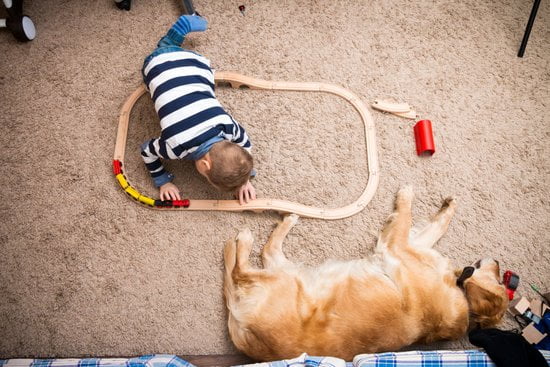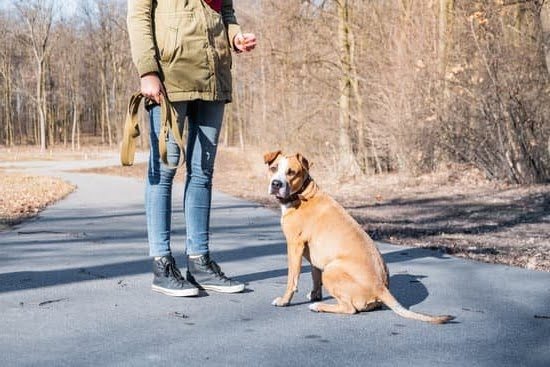Are you interested in learning how to train a dog to show aggression on command? Understanding aggressive behavior in dogs is the first step towards effectively training them. Aggression is a natural behavior in canines, but it can become problematic if not properly managed. In this article, we will delve into the intricacies of aggressive behavior in dogs and explore the importance of proper training in addressing it.
Aggressive behavior in dogs can manifest in various ways such as growling, baring teeth, or even biting. It is crucial for dog owners to understand the root causes of aggression, which can include fear, territoriality, or even pain. By gaining insight into the triggers and motivations behind aggressive behavior, owners can better address and manage this issue.
Proper training plays a pivotal role in shaping a dog’s behavior, including their response to aggression. Obedience training serves as the foundation for instilling discipline and control in dogs. With a solid groundwork in obedience training, owners can then introduce the concept of aggression and work towards conditioning their pets to display this behavior on command.
The Importance of Proper Training
Proper training is essential when it comes to teaching a dog to show aggression on command. It is important for dog owners to understand that this type of training should only be undertaken by experienced individuals who are knowledgeable about canine behavior and have a clear understanding of the potential risks involved. Training a dog to show aggression on command requires careful consideration and should never be taken lightly.
Training a dog to display aggressive behavior on command should only be considered in specific working roles, such as protection or police work, and not for personal or recreational purposes. It is crucial for dog owners to recognize the serious nature of this type of training and to approach it with the utmost responsibility.
In addition, it is important for the safety of both the dog and those around them that appropriate safety measures be put in place when conducting this type of training.
To ensure that proper training techniques are being utilized, it is advisable for dog owners to seek the guidance of professional trainers or behaviorists who specialize in working with dogs in roles that require controlled aggression. These experts can provide valuable insight into safe and effective methods for training dogs to display aggression on command while also emphasizing the importance of responsible ownership and ongoing management of their dog’s behavior.
Building a Strong Foundation
Obedience training is an essential starting point when it comes to training a dog to show aggression on command. Without a strong foundation of obedience, attempting to train a dog for aggression can be unsafe and ineffective. Obedience training teaches dogs basic commands such as sit, stay, and come, which are crucial for maintaining control in any situation. Additionally, obedience training helps to establish you as the pack leader, earning your dog’s respect and trust.
To effectively train a dog for aggression on command, it is important to first ensure that they have mastered basic obedience commands. This will lay the groundwork for the more advanced training that will follow. Here are some key obedience commands to focus on when building a strong foundation:
- Sit: Teaching your dog to sit on command can help them learn impulse control and can be useful in managing their behavior in various situations.
- Stay: The stay command is essential for keeping your dog under control, especially when introducing the concept of aggression.
- Come: A reliable recall is crucial for maintaining control over your dog, particularly if they are showing signs of aggression.
Once your dog has demonstrated proficiency in these basic obedience commands, you can then begin to introduce more advanced training for aggression on command.
Overall, obedience training is an essential first step in preparing your dog for more specialized aggressive behavior training. It not only establishes a strong foundation of discipline and respect but also ensures the safety of both the dog and those around them. By prioritizing obedience training, you set the stage for successful and responsible training for aggression on command while promoting a harmonious relationship between you and your pet.
Introducing the Concept of Aggression
When it comes to training a dog to show aggression on command, it is crucial to approach the process with caution and responsibility. Introducing the concept of aggression must be done carefully and with the understanding that the goal is not to create a dangerous or uncontrollable animal, but rather to have control over their behavior in specific situations. Here are some tips for introducing the concept of aggression in dog training:
- Start with basic obedience training: Before introducing any aggressive commands, ensure that your dog has a strong foundation in obedience. This will establish you as the leader and help prevent any unwanted behaviors.
- Gradual introduction: When introducing the concept of aggression, it’s important to start slowly and gradually. Begin by using a verbal command or hand signal for your dog to display mild signs of assertiveness, such as barking or growling.
- Positive reinforcement: Use positive reinforcement techniques when teaching your dog to exhibit controlled aggression. Reward them when they respond correctly to your commands, and provide plenty of praise and treats for their good behavior.
It’s important to note that training a dog to show aggression on command should only be done by experienced trainers who understand canine behavior and psychology. Using forceful or abusive methods can lead to unpredictable and dangerous behavior in dogs. Seek professional help if you are unsure about how to proceed with this type of training. Remember, the goal is always responsible ownership and ensuring the safety of both your pet and those around them.
Ultimately, when introducing the concept of aggression in dog training, it’s essential to proceed with caution, patience, and respect for your pet’s natural instincts. With proper guidance and consistent training methods, it is possible to teach a dog controlled aggression without compromising their overall well-being or safety.
Training Methods for Aggression on Command
Once a dog has developed a strong foundation of obedience training, the concept of teaching aggression on command can be introduced. It is important to note that this should only be done by experienced trainers and handlers, as it comes with inherent risks.
One method for training a dog to show aggression on command is through the use of positive reinforcement. This involves rewarding the dog for displaying the desired behavior, such as growling or barking on command. The key is to associate the command with the behavior and then reinforce it with praise or treats. It is crucial to never reward aggressive behavior outside of the designated training sessions.
Another approach is desensitization and counterconditioning, which involves gradually exposing the dog to stimuli that may trigger aggressive behavior in a controlled environment, and then replacing the negative response with a positive one. This can be a lengthy process and should be done under the guidance of a professional trainer or behaviorist.
It is important to remember that teaching a dog to show aggression on command should not be taken lightly. Not all dogs are suitable candidates for this type of training, and it should only be done with careful consideration of the individual dog’s temperament and in adherence to local laws and regulations regarding dangerous dogs.
| Training Method | Description |
|---|---|
| Positive Reinforcement | Rewarding the dog for displaying desired aggressive behavior on command |
| Desensitization and Counterconditioning | Gradually exposing the dog to stimuli that may trigger aggression in a controlled environment and replacing negative response with a positive one |
Safety Precautions and Responsible Ownership
Training in a Controlled Environment
When training a dog to show aggression on command, it is crucial to prioritize safety for both the dog and the handler. This type of training should only be conducted in a controlled environment, away from other animals or people who could be at risk of harm. Utilizing a secure, fenced area or a professional training facility can help ensure that the training sessions are conducted safely.
Use of Protective Gear
It is also important to use appropriate protective gear when working with a dog on aggression training. This could include wearing padded clothing and using bite sleeves or muzzles to prevent any accidental injuries during training sessions. Additionally, always have a leash or other forms of restraint on hand to maintain control over the dog if necessary.
Stress Management for the Dog
Aggression training can be stressful for dogs, so it is essential to monitor their stress levels during training sessions. Implementing regular breaks, providing access to water, and ensuring that the dog has periods of rest can help manage stress levels. It is also crucial to observe the dog’s body language for signs of distress or anxiety and be prepared to end the session if necessary.
By implementing these safety precautions and practicing responsible ownership, owners can ensure that aggressive behavior training is conducted in a manner that prioritizes safety and welfare for all involved.
Recognizing Signs of Stress and Anxiety in Dogs
It is essential for dog owners to be able to recognize the signs of stress and anxiety in their pets. This is particularly important when it comes to training a dog to show aggression on command, as it is crucial to understand how the dog is feeling in different situations.
Signs of stress and anxiety in dogs can include panting, pacing, excessive drooling, trembling, avoiding eye contact, and attempts to escape or hide. Recognizing these signs can help owners assess whether their dog is comfortable with the training process or if they are feeling distressed.
One important aspect of recognizing stress and anxiety in dogs is understanding their body language. Dogs communicate through their body posture, facial expressions, and vocalizations. For example, a dog that feels anxious may exhibit behaviors such as yawning, lip licking, or turning away from the source of their discomfort.
It’s also crucial to pay attention to any sudden changes in behavior or unusual reactions to specific triggers. This information can help owners make informed decisions about continuing with the training process or adjusting their approach to ensure the well-being of their pet.
In addition to recognizing signs of stress and anxiety during training sessions, it’s equally important for dog owners to be aware of potential triggers that may cause distress for their pets in other environments. Understanding what situations or stimuli might provoke an aggressive response from the dog can help owners address these issues proactively and prevent negative outcomes.
By being attentive to their pet’s emotional state and reacting accordingly, dog owners can create a safer and more supportive training environment while working on teaching their dog aggression on command.
| Signs of Stress and Anxiety | Body Language Cues |
|---|---|
| Panting | Yawning |
| Pacing | Lip licking |
| Excessive drooling | Turning away from source of discomfort |
| Trembling | Nervous tail wagging |
Addressing and Managing Aggressive Behavior in Real-Life Situations
As a responsible dog owner, it is crucial to address and manage aggressive behavior in real-life situations. Whether your dog is showing aggression towards other dogs, people, or objects, it’s important to understand how to handle these situations safely and effectively.
One of the first steps in addressing and managing aggressive behavior is to recognize the triggers that may cause your dog to act aggressively. This could be anything from a certain person or animal, to a specific environment or situation. By identifying these triggers, you can take proactive steps to avoid or minimize them, thereby reducing the likelihood of your dog displaying aggressive behavior.
In real-life situations where your dog does show signs of aggression, it’s important to remain calm and collected. It can be tempting to react with fear or anger, but this can escalate the situation and make things worse.
Instead, try to remove your dog from the triggering situation calmly and assertively. Using a confident but gentle tone of voice and body language can help convey a sense of control to your dog and prevent the situation from escalating further.
It’s also important to remember that managing aggressive behavior in real-life situations is an ongoing process. Consistent training, positive reinforcement, and patience are key components of addressing and managing aggression in dogs.
With dedication and perseverance, you can work towards modifying your dog’s behavior and creating a safer environment for both your pet and those around them. If you are unsure about how best to approach this type of training effectively seek advice from an experienced professional trainer or behaviorist who specializes in working with aggressive dogs.
Seeking Professional Help
In conclusion, training a dog to show aggression on command is not a task to be taken lightly. It requires a deep understanding of canine behavior and psychology, as well as the importance of proper training methods. Building a strong foundation through obedience training is crucial before even considering introducing the concept of aggression.
Training methods for aggression on command should always prioritize positive reinforcement and rewards, rather than punishment. It is important to keep in mind that teaching a dog to show aggression on command comes with great responsibility, and all precautions must be taken to ensure the safety of others and the wellbeing of the animal.
Even with the best intentions and efforts, sometimes addressing and managing aggressive behavior in real-life situations can be overwhelming. This is when it becomes necessary to seek professional help from a trainer or behaviorist who specializes in working with aggressive dogs. Recognizing signs of stress and anxiety in dogs is crucial, and knowing when it’s time to consult an expert can make all the difference in re-training an aggressive dog effectively and responsibly.
Frequently Asked Questions
How Do I Teach My Dog to Growl on Command?
Teaching your dog to growl on command can be done through positive reinforcement training. Start by encouraging a low growl during play and rewarding it. Then, add the verbal command and reward consistently.
How Do I Make My Dog Harsh?
Making your dog harsh or aggressive is not recommended as it can lead to dangerous behavior. Instead, focus on training for obedience and socialization to ensure a well-behaved and friendly pet.
How Do You Show an Aggressive Dog You Are Alpha?
Showing an aggressive dog that you are alpha involves establishing yourself as the leader through consistent training, clear communication, and setting boundaries. Use positive reinforcement to reward calm and obedient behavior while addressing any aggression with professional guidance.

Welcome to the blog! I am a professional dog trainer and have been working with dogs for many years. In this blog, I will be discussing various topics related to dog training, including tips, tricks, and advice. I hope you find this information helpful and informative. Thanks for reading!





